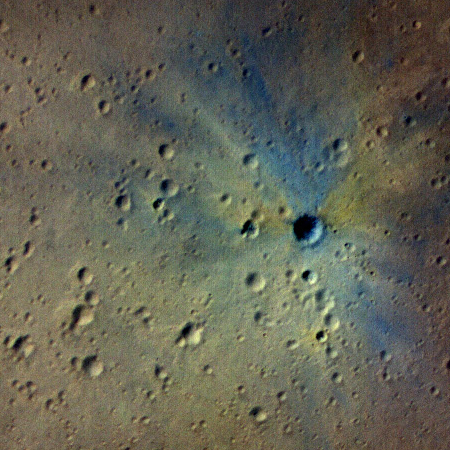NASA administrator in talks about commercializing ISS
In a wide-ranging news article today, NASA administrator Jim Bridenstine revealed that the agency is in discussions with many private corporations about the possibility of privatizing ISS.
Bridenstine declined to name the companies that have expressed interest in managing the station, and said he was aware that companies may find it “hard to close the business case.” But he said there was still seven years to plan for the future of the station, and with the White House’s budget request “we have forced the conversation.”
Bridenstine’s approach to ISS’s future seems reasonable to me. At some point the federal government needs to face the station’s future, and now is a better time to do it then later.
The article however confirmed my generally meh opinion of Bridenstine. First, he reiterated his born-again new belief in human-caused global warming, a belief that seemed to arrive solely for him to gain the votes to get him confirmed in the Senate.
Second, he said this about LOP-G, NASA’s proposed international space station that would fly in lunar space.
Known as the Lunar Orbiting Platform Gateway, the system would be built by NASA in partnership with industry and its international partners, he said.
“I’ve met with a lot of leaders of space agencies from around the world,” he said. “There is a lot of interest in the Gateway in the lunar outpost because a lot of countries want to have access to the surface of the moon. And this can help them as well and they can help us. It helps expand the partnership that we’ve seen in low Earth orbit with the International Space Station.”
But the first element of the system wouldn’t be launched until 2021 or 2022, he said. [emphasis mine]
The highlighted words illustrate why Bridenstine seems like a lightweight to me. LOP-G might be flying near the Moon, but nothing about it will provide anyone any access to the lunar surface. Not only will it not be operational in any manner for more than a decade, at the soonest, but it doesn’t appear designed to make reaching the lunar surface any easier. Instead, it mostly seems designed to justify SLS and Orion, and provide that boondoggle a mission.
Still, Bridenstine has in the past been generally in favor of commercial space, and that position appears to be benefiting NASA’s commercial crew partners. Prior to Bridenstine’s arrival the decisions of NASA’s safety panel acted to repeatedly delay the launch of the manned capsules being built by SpaceX and Boeing. Now that safety panel seems to have seen the light, and is suddenly more confident in these capsules. I suspect Bridenstine might have had some influence here.
In a wide-ranging news article today, NASA administrator Jim Bridenstine revealed that the agency is in discussions with many private corporations about the possibility of privatizing ISS.
Bridenstine declined to name the companies that have expressed interest in managing the station, and said he was aware that companies may find it “hard to close the business case.” But he said there was still seven years to plan for the future of the station, and with the White House’s budget request “we have forced the conversation.”
Bridenstine’s approach to ISS’s future seems reasonable to me. At some point the federal government needs to face the station’s future, and now is a better time to do it then later.
The article however confirmed my generally meh opinion of Bridenstine. First, he reiterated his born-again new belief in human-caused global warming, a belief that seemed to arrive solely for him to gain the votes to get him confirmed in the Senate.
Second, he said this about LOP-G, NASA’s proposed international space station that would fly in lunar space.
Known as the Lunar Orbiting Platform Gateway, the system would be built by NASA in partnership with industry and its international partners, he said.
“I’ve met with a lot of leaders of space agencies from around the world,” he said. “There is a lot of interest in the Gateway in the lunar outpost because a lot of countries want to have access to the surface of the moon. And this can help them as well and they can help us. It helps expand the partnership that we’ve seen in low Earth orbit with the International Space Station.”
But the first element of the system wouldn’t be launched until 2021 or 2022, he said. [emphasis mine]
The highlighted words illustrate why Bridenstine seems like a lightweight to me. LOP-G might be flying near the Moon, but nothing about it will provide anyone any access to the lunar surface. Not only will it not be operational in any manner for more than a decade, at the soonest, but it doesn’t appear designed to make reaching the lunar surface any easier. Instead, it mostly seems designed to justify SLS and Orion, and provide that boondoggle a mission.
Still, Bridenstine has in the past been generally in favor of commercial space, and that position appears to be benefiting NASA’s commercial crew partners. Prior to Bridenstine’s arrival the decisions of NASA’s safety panel acted to repeatedly delay the launch of the manned capsules being built by SpaceX and Boeing. Now that safety panel seems to have seen the light, and is suddenly more confident in these capsules. I suspect Bridenstine might have had some influence here.


